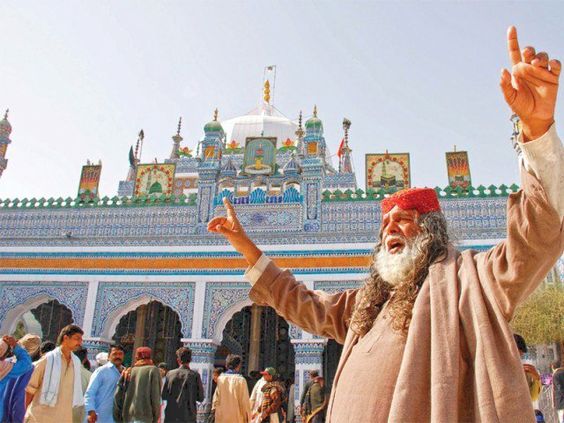
Fanna- Fi -Allah is a Canadian- American group which plays Qawwali, a well-known form of Sufi devotional music played in the Indian subcontinent.
Hī sūfian jo des ā, latīf jī zamīn hī;
Hī sāmī wāro āstān, makān-i ‘ārifian hī
Sachal jo hit darāz āh, sāz āh dīn hī:
Hite ā dīn ‘ishq o uns, ā balad amīn hī!
Hit ā bashar birādarī, hite na zāt pāt ā!
Ae sindh tū mathān sadā salām ā salāt ā!
This is the country of Sufis, the land of Latif;
This is Sami’s place, the abode of mystics;
Here is Sachal’s dargah, this religion is music:
Here, religion is love and affection, the land of peace!
Here mankind is our brotherhood, there is no caste system here!
O Sindh, may prayers and peace always be upon you!
– Hyder Bux Jatoi, 1954*
By Milind Teckchandani
Fanna- Fi -Allah is a Canadian- American group which plays Qawwali, a well-known form of Sufi devotional music played in the Indian subcontinent. It is led by Tahir Qawwal (formerly Geoffrey Lyons) who has learnt this art form from classical masters in India and Pakistan. Aminah Chishti accompanies him on Tabla. She is the first female tabla player to be initiated into the lineage of Qawwali. “Fanna Fi Allah” means “Annihilation in God” inspired by the long standing Sufi tradition. In the Sufi world “Love for Beloved” and “God” are the same – communion with the spirit being a key tenet of Sufism. I personally think that Sufism’s emphasis on all religions being equal and on the personal nature of one’s interaction with the almighty without emphasis on rituals etc. have played an important part in the community’s financial success as we are able to easily mingle into the broader neighborhood. Mom’s favorite saying is ” Pehenjo Ghar Guru jo Darr” (One’s home is temple itself).
I first came across Fanna -Fi-Allah’s video recordings on YouTube a couple of years ago and since then, I have been a follower of their music. Unlike others, Tahir Bhai and the broader group are able to effortlessly convey to the listener the spirit of their renditions, which I consider as a remarkable achievement for someone to whom Hindi/Urdu does not come naturally.
I end with the wonderful song “Lal Meri Pat” sung by Fanna-Fi-Allah at the shrine of Lal Shabaz Qalandar at Sehwan Sharif in Sindh, Pakistan. There seems to exist a fascinating relationship between Lal Shahbaz Qalandar who is worshiped by Sindhi Muslims and Jhule lal, a deity worshiped by Hindu Sindhis. Something similar can be seen at the temple of Mata Hinglaj Bhawani, considered to be “Kuldevi” of Hindu Sindhis, based in Lasbela district of Balochistan who is also revered by Sindhi Muslims as “Nani Mandir” (Maternal Grandmother’s Temple). Interestingly, the word Sehwan originates from Sewistan or “Shiv-stan” (literally, the land of the Hindu God Shiva), being the kingdom of the last Hindu Sindhi ruler of Sindh, Raja Dahir, which extended to the Punjab.
No wonder that the lyrics of Lal Meri Pat include “Shahbaz Jhule Lal Hai, Qalander Jhule Lal hai”.
__________________
*Hyder Bux Jatoi, peasant leader and Sindhi nationalist wrote the above lines in 1954. Jatoi mentions three most prominent Sindhi poets, Shah Abdul Latif, Sachal Sarmast , and the Hindu, follower of Advaita Vedanta, Sami , whose words, to many, exemplify Sindh’s ‘Sufi culture’.
This post borrows extensively from the article “Sindhis are Sufi by Nature”: Sufism as a Marker of Identity in Sindh by Julien Levesque. Here is link to the article:
https://halshs.archives-ouvertes.fr/halshs-02464387/document